PRP Injections for Hair Loss, Does It Work?
In the last several years, medical specialists have started using platelet-rich plasma (PRP) injections to address both skin rejuvenation and hair loss for men and women. Hair loss can often be associated with loss of blood flow to the scalp. PRP, which is “spun up” from your own blood, is a relatively safe and natural way to stimulate hair growth or acollagen production in the skin. Results vary, but with minimal side effects and relatively low cost, PRP treatment is worth investigating.
What is PRP?
- A blood sample spun in a centrifuge to separate the platelets out for use
- Platelets release growth factors to stimulate a healing response, cell growth and in this case the hair follicle
- This helps the hair grow better, longer and thicker
Results?
- PRP can work great for some and not at all for others
- Lots of variabilities – age, health, how long you’ve had hair loss, the section of hair on the head
- How often you go for treatment affects the results. More often is better.
- Women generally respond a little better than men
How to tell if it’s working?
- Texture and feel
- Photographs are helpful
- Take photos consistently (same room, same time, after a similar haircut, same part of the scalp)
Is there a recommended protocol?
- 4 treatments – once per month
- Then 1 treatment every 3 months
- Or, you can use once per month until you notice results (may take 6-8 months) then revert to once every 3 months
- More studies are needed to determine the best protocol. This therapy is still relatively new.
Is it painful?
- It can be painful
- It varies per person, not everyone finds it to be painful
- A combination of nitrous oxide and lidocaine is helpful for reducing pain during treatment
Possible synergists
- There’s no magic bullet but there are some combinations that help
- Red light therapy is showing nice results in combination with PRP
- Minoxidil 15%-20% improvement in the thickness of the hair
- Hair transplants and PRP can be a good combination – using PRP for maintenance
Other uses for PRP
- Skin health
- PRP pairs nicely with skin collagen stimulating laser therapy
Cost
- Roughly $500 per treatment (ballpark)
Reaction & side effects
- No serious side effects
- Slight pain from time of injection
- Non-invasive
Where to learn more
In This Episode
Episode Intro … 00:00:40
Definition of Platelet-Rich Plasma (PRP) … 00:02:47
PRP for Hair Loss: Effectiveness … 00:04:00
Will PRP Injections Work for You? … 00:08:30
Are There Varying PRP Protocols? … 00:13:45
Pain Associated with PRP Injections … 00:19:48
PRP Recovery Time and Side Effects … 00:23:50
PRP for Hair Loss in Women Versus Men … 00:28:30
Synergists and Supplements for Hair Loss … 00:29:18
PRP Skin Treatment … 00:32:13
PRP Injection Cost … 00:34:45
Episode Wrap-Up … 00:39:21
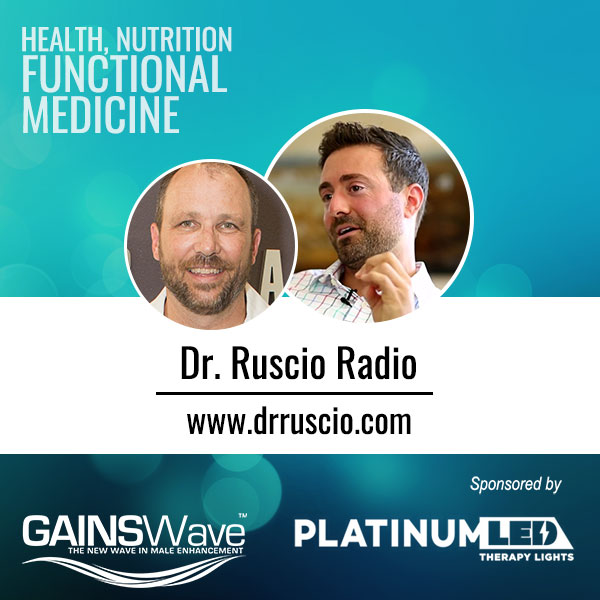
Download this Episode (right click link and ‘Save As’)
Episode Intro
Dr. Michael Ruscio, DC: Hey everyone, and welcome to Dr. Ruscio Radio. This is Dr. Ruscio. Today I’m here with Dr. Jeff Birchall who is an expert in PRP therapy, a type of injection that can help with hair loss and skin health. And we’re going to focus more on hair, but we might also venture into skin. This might be, if we term it plainly, a youthening injectable therapy that could help with hair loss. So Jeff, welcome to the show and thanks for being here.
Dr. Jeff Birchall: I appreciate your giving me the opportunity. I’m looking forward to it.
DrMR: Yeah, this is something I’ve been following for a little while. And I have longed to bring someone on who is really focusing on doing this therapy in clinical practice so we could get a boots-on-the-ground clinician perspective. So, very excited to do that. Tell us a little bit about your background and how you got into your work in the clinic.
DrJB: Sure. So my background was family practice and I did that for 15 years here in Southern California. About 12 years ago, I branched off into cosmetic medicine in general and have been using a variety of modalities. In the cosmetic world, hair loss is a pretty significant factor. I think there’s a lot of emotion that goes into losing hair as we get older, in both males and females. So you’re always looking for things that you can do to make a difference there. PRP was introduced several years ago, both for that and for skin treatments.
So there are two reasons we started wanting to explore it. I first started using PRP to help with the fat transfer that we’re using on the face, to keep the fat surviving better. And then I branched into hair therapy about 18 months ago and have been doing it since that time.
Definition of Platelet-Rich Plasma (PRP)
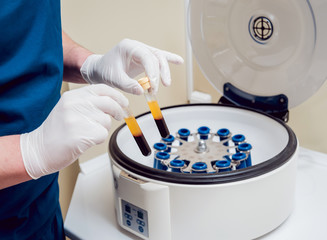
DrMR: Can you tell people what PRP actually is
DrJB: So PRP, or platelet-rich plasma, is what you get if you take a syringe of blood (like everybody gets when they go to get their physicals every year), take the blood out and spin it down in the centrifuge. When you spin it down, the red blood cells collect at the bottom, and you get a clear section in the bottom end of that. The clear section has a higher concentration of platelets.
The concept behind this is that platelets are an important part of the clotting cascade. So when you cut yourself, it helps plug the hole, so to speak. But when it gets there, it releases a lot of signals (what we call growth factors), to stimulate or signal the healing response. So it’s an important part of all healing. What we’re doing is taking advantage of those growth factors. So we isolate the platelet fraction and we have to activate it: mix it with some calcium or even some of the product that’s already in the body.
When the plasma gets injected into an area, those growth factors help stimulate healing, cell-differentiating, and cell growth so that you improve either the thickness or the quality of the skin. In the case of hair, we want those signals to stimulate the hair follicle to grow better and thicker and longer. So that’s the basic idea behind PRP.
PRP for Hair Loss: Effectiveness
DrMR: One of the things that I’m really curious to get your read on is, what do you feel the response rate is on this therapy? Obviously there’s going to be some variance with different backgrounds, different ages, different cases, different severities. I’ve looked into the literature on this. Our team performed an exhaustive review and I gave that review a quick overview.

When you look at the literature from a high level—systematic reviews, meta-analyses—there seems to be the suggestion, “Yeah, there could be something here, but we need more research and there’s some positive findings, some negative findings.” When you drill down and look at the individual clinical trials, it certainly seems like there’s some benefit. But it’s very hard for me, not being a dermatologist or someone who’s highly focused here, to adjudicate if the improvements are significant. You’re looking at diameter measures and hair follicle density.
Statistically it’s significant in terms of the math. But is that something where a guy’s going to say, “Yes, after a few months, this really feels like my hair is substantially thicker,” or not? I think that’s the hardest thing to read from the scientific literature. And I’d love to hear your elaboration on this. Feel free to be as detailed as you want, because I’m sure people who are looking into this hair therapy will try to get as crystal an answer as possible to this question before they decide to undergo it. And you probably have a typical response you build here with your patients. But very curious to hear your elaboration on this.
DrJB: Yeah, and I think that’s the big question in this area. When I’m talking with patients, I say there are two kinds of questions you’re asking. One, does it make a difference? And two, is it worth it? Because unlike traditional insurance where someone else is footing the bill, when you’re paying the price, you want to make sure you get your money’s worth on the other side of it.
And I think that’s just a real question, so I’m not afraid of it. I think it’s a good one. The first part’s the easier part: does it make a difference? And the answer’s yes. I think there’s a consistent trend coming out in the literature that if you do objective measures like the hair pull test, hair density, hair thickness, all those things you can objectively look at per square inch, we’re seeing some improvement and definite progress in that direction. But the average person that’s looking in the mirror at the end of the day doesn’t really care about how thick the hair shaft is and how many pull out with a pinch. They care about, what do I look like in the mirror? And there’s more variability there. That’s just the honest answer. I do not think we’ve achieved the definitive answer in hair restoration with PRP.
But we have a significant improvement and movement in the right direction. So we have people where it makes a very significant difference. Our gold standard or our poster child is a 25-year-old guy who was thinning his hair and he did not want that. So he’s committed to doing PRP on a regular basis. The typical pattern is to do four treatments about a month apart. He did eight treatments about a month apart and he’s religious about coming every three to four months. What you see is not much change for the first three to six months. The hair grows slow enough that you’ve got to get the cumulative effect before you see a big difference.
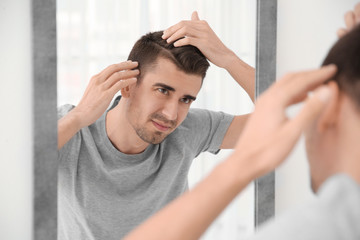
But now we’re talking 18 months afterwards. We picked him up very early in our venture into this world and the improvement is profound. So that’s our poster child. On the other end of that spectrum is someone that’s been dedicated and sees a little thickness, or can feel a little thickness, but not a massive change. Personally for me, the front part of the forehead has had very little change. But the back of my hair and back top of the head has had a much more significant response. So even on one person, the area of the head can make a difference.
It makes a difference how far along you are. Someone that has been dealing with hair loss for 30 years and has no peach fuzz, no vellus hairs, is not going to respond as much as the person that’s been noticing hair loss for two years. That hair follicle hasn’t completely atrophied. It’s still able to respond to the treatment.
So there’s lots of variability. When there’s lots of variability, I think that’s where some of the controversy or some of the questions come up from reading the literature. How much of a response are you going to get? Unfortunately there’s just variability: from person to person, in age, length of time they’ve been dealing with hair loss, and how committed they are to keeping up with treatments. You want to increase the blood flow to the scalp in this process.
So we know testosterone affects blood supply to the scalp, and the hair follicle is going to be atrophying. So as males with the right genetics, we start losing our hair on the top much earlier in life. Those factors all play a part. Increase in the blood flow makes a difference and can be significant. But again, there’s variability from person to person.
DrMR: So, like you said, someone who has a shorter duration of hair loss is likely to see a positive result. And I’m assuming—because PRP is derivative of one’s own blood—that the healthier someone is, probably the better the results you’re going to see. Do you see any kind of trend like that in the clinic?
DrJB: There’s always that. In medicine in general, a healthier person with better blood supply is always going to heal better than a person that has significant vascular compromise, or just does not have the same circulatory and health issues. So yes, overall health makes a difference. But practically speaking, in my world, the people who are coming to me are generally healthy people.
If you’re dealing with something really significant like a cancer, I’m not sure that hair growth on the top of your head is your number one concern. So we tend to get younger, healthier people coming in to get this done.
Will PRP Injections Work for You?
DrMR: So what about judging if the therapy is going to work for you? You introduced a couple guidelines, which are also reflected in the literature: about three to four months at once a month, and from there, following up about every three months. But it seems like there are some who may not see a robust response right away. What if someone has done three to four months at once per month and they’re not seeing the results they like? Is there any benefit with continuing with once a month until they see that result, then going into once every three months?

DrJB: Good questions. I think what we’re finding here is we’re still early in figuring out exactly how to maximize this. So we know those growth factors are there and we’re still working out the details of exact dosing, the timing, the concentrations. A number of those things are still variable, in terms of what the best practice will eventually be.
We’ve noticed more is better, in that more treatments get better response for the hair follicle. So usually what I would like to see is someone do a standard introductory package: three to four months is where I would go. We like four. If you you just cannot tell anything’s going on there, I’d be a little shy to do more. But if you see progress at that point, you’re starting to make a difference. Even if it’s not where you want to be, I’m encouraged by that, and there’s every reason to think that more and being more aggressive is going to get you better results in the long run. So I would definitely feel comfortable continuing to do more in that situation, rather than to back off.
DrMR: Are there some key things you instruct your patients to look for, to tell if this is working? I’m assuming the easiest one is just falling hair. I could be wrong here, but it’s probably harder to tell thickness changes. You need to improve the hair growth, then probably have some regrowth, and then regrowth of healthier hairs. And eventually, after probably four to six months, you can tell if there is some thickening. So I’m assuming the first thing you’re doing is seeing less loss of what’s falling out in the comb or in the shower. Is that one of the better first things to look for?
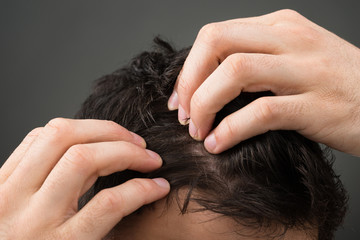
DrJB: It is definitely one of those things we look for. However, that is subjective. We all know that we go through periods where we lose more than others, so there are other things that can influence that. So I’m not sure if I would do that. I think there’s a general sense of the texture and the feel. Even the vellus hairs and hairs that are starting off, you can feel more easily if you touch your head. Most people have a fairly good sense of how the thickness of their hair feels as they’re running their fingers through their hair and they’re washing their hair on a regular basis. So that’s the thing that most of our patients pay attention to.
Photographs become an important part. There are lots of things that can make photographs hard to interpret. But I think there are things a person can standardize on their own. Do it right when you get your haircut to the same length. For guys it’s a little bit easier if you have a one-inch haircut: always do your picture at one inch long so you can start to see it. Preferably take it in the same spot, in the same place in your house. It almost doesn’t matter what place you take it in as long it’s the same from time to time. You can take cell phone pictures from the top and even the back. The crown of the head is a place where you can start to see a difference in the density of the hair.
So I think that will be the other little trick that people can use to help: photos and even the tactile sense of: “Do I feel a new growth on balder areas? Do I feel an increase in the thickness in the hair, as I’m washing my hair on a regular basis?” That can help them make that decision on if they’re getting progress on the treatment.
Are There Varying PRP Protocols?
DrMR: Okay. And regarding protocol, I’m not familiar with all the specifics. I should mention that I and another doctor who I work with out of the same space have been doing PRP for a number of months. When he started, I was one of the first guinea pigs. I’ve stayed in the lab for about four months and I can’t say I’ve noticed a lot. It can be hard to tell. Now that I’m paying attention to it, I feel like my hair looks better from week to week, and I’m not sure if I had fully noticed that before. So I’m having a hard time discerning if it is helping or not. But I’m wondering, is there a superior supplier or manufacturer, or dose concentration, or anything you feel to be a better protocol with application here? I’m assuming a lot of this is still being mapped out.
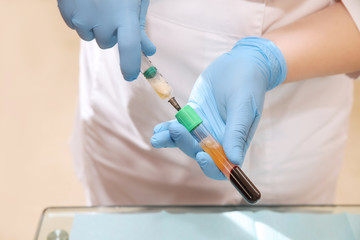
DrJB: I think those are good questions. In four months, you’re just hoping to start to see some of that change. The cumulative effect on the hair and growth is so slow that it’s too early to rule it out for sure. When it comes to the protocols, I made one change when I first started. It was three treatments one month apart, but we’ve definitely found that more was better. Now we don’t even introduce that to patients. We tell them, plan on doing four to get going. Then we evaluate, maybe even a couple months after that, to see where you’re going. And we find most people in that time have a sense that they’re getting where they need to go.
We’re using your own blood. Regarding variations from protocol or package that you’re getting the PRP from, I think the people selling and marketing pick up on nuances and try to make big differentiations. But I haven’t seen from the literature, or a big change from patient experience, that there is a definitive right answer here. It’s still being mapped out. And this is what happens with technology. We have this new thing that has only been around for two to four years. In four years, we don’t have a really long-term study to show which one is the superior one. So unfortunately there is no silver or magic bullet, just another tool that helps us move in the right direction.
DrMR: Do you think there’s anything to be said for technique? I’m not sure what the target area you’re trying to inject into the scalp is, but is there any technique difference there, in terms of the skill of the person applying it?
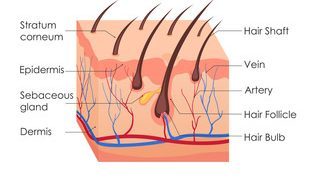
DrJB: Again, really good questions. And I don’t know if I have the answer—I’ll tell you what I do. The hair follicle is in the dermis, so you want to get the PRP going to the dermis. But we also know that the growth factors really affect the blood supply to that area. So if you get it subdermal into the space there, the material tends to diffuse more evenly across the entire scalp. The whole area gets bathed. You’re getting increased vascular growth. The plan here is increased blood supply to the scalp. It’s really the blood supply bringing all those nutrients to that follicle: that’s the most important thing. So we’re going just subdermal into the space to get the PRP where we want it.
There’s skill in that. What you really have to pay attention to is your injecting. You can feel the resistance to the push of the material. If you’re going into the dermis itself, it’s going to be a lot more resistant, a lot harder. More painful, actually. If you get down into that subdermal space, you’re going to get a lot less resistance. It flows easier, it’s less painful, and I think you’re getting into the spot that’s going to affect the blood supply the most.
DrMR: That’s a little deeper?
DrJB: Yeah, a little deeper and you can definitely feel the resistance to the push when you know you’re in that space.
So there is a little bit to that. But again, we’d need to see a study that has looked at people doing it both ways and follow the same protocol and follow the number of people over even one year, two years, to see if there’s a difference. We don’t know the answer to that question. So nothing definitive.
Sponsored Resources
DrMR: Hey everyone. I’d like to thank two companies that can help you to improve your health and have also allowed this podcast to be possible.
Firstly, GAINSWave. GAINSWave therapy can help enhance sexual function by using sound waves similar to ultrasound to both stimulate angiogenesis, or the growth of new blood vessels, and breakdown plaques in existing blood vessels. And GAINSWave has been shown to improve erectile function in men according to two meta-analyses and there have also been 40 clinical trials showing various degrees of variability in using GAINSWave therapy.
I personally have done one round with Dr. Judson Brandeis , who’s been on the podcast, and I had been very happy with the results of GAINSWave. So if you’re a man suffering, I would not go any longer suffering and I would definitely give GAINSWave a look. They have an offer of one free GAINSWave therapy session if you visit gainswave.com/patient . And for medical professionals, if you want to learn more, you can go to joingainswave.com/provider .
Also, Platinum LED , who makes perhaps the best red light therapy unit on the market. And red light therapy can improve your health by stimulating mitochondria, which make energy for your cells. Now, the research while preliminary has shown encouraging results for an array of applications with red light therapy, thyroid, skin health, anti-aging, joint pain and body composition to name a few. And I’ve also been using a Platinum LED unit at home and so far I’m really liking it. I do feel like my skin looks much healthier, as has been documented in some of the studies can reduce wrinkles.
Now, in a direct side by side test Platinum LED lights have produced the highest radiants of any led light on the market today. And I’ll link to a cool video for this in the transcript. And this is the coolest part. All their lights come with a 60 day trial period and a full three-year warranty. They’re offering $50 off certain products at platinumtherapylights.com . If you use a coupon code Ruscio50 at checkout. Check them out.
Pain Associated with PRP Injections
DrMR: So another question here people may be wondering. How painful is it to get a needle stuck in your head?
DrJB: I can tell you it is one of the most painful things that we have done. It’s been a struggle to figure out a way to make this more tolerable. Of course, my wife says it’s just because I’m a guy and I’m a wimp. But yeah, it hurts. So our first foray into that was just injecting right away.
We started doing ring blocks: we do a little lidocaine in a ring pattern around the scalp to help decrease the pain. There’s no single nerve that goes to the scalp, so you have to do generalized, multiple injections around. That itself is painful, but makes a huge difference. We’ve found topicals not that useful, especially for ladies that are doing post-menopausal thinning of the hair. To get numbing cream down through the hair onto the scalp to penetrate deep enough just creates messy hair that is greasy and hard. And we found that not to be very effective.
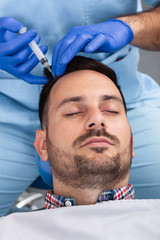
We’ve started, just recently, doing Pro-Nox, a nitrous oxide, to help with that. I have found that to be our best answer. I find the nitrous oxide to give the best results for our clients and personally. But a combination of ring block and nitrous is important, because it is really uncomfortable.
DrMR: Do you feel that there is a variability from person to person? My buddy gets the PRP injections from his wife, and she also does mine. She always says, “Gosh, my husband jumps off the table and you barely flinch.” She also said I have a thicker fat pad in my head. But if you have more of a fat pad in your head, theoretically it would be less painful. So for me it’s actually not too bad. It’s like a little prick. But apparently for my friend it’s a bit more painful. I’m assuming part of that has to do with your scalp anatomy. Are you noticing a difference from person to person?
DrJB: Oh, absolutely. Generally we see differences in a lot of cosmetic procedures, because we’re using injections and lasers. So pain control is something we’re always doing everything we can to minimize. In my experience, 5-10% of people hardly feel anything. It’s a walk in the park. 5-10% are absolutely miserable and it’s intolerable. And then the other 80-90% of people are somewhere in between those extremes. I don’t know if it’s easy to predict ahead of time. But we know to ask people, “Do you have higher or lower pain tolerance?” People that say, “I have low pain tolerance and I hurt,” always hurt. They know that about themselves and they hate it so much they’re never shy to let you know. So I always believe people when they say, “I have low pain tolerance and it’s going to be miserable.” And we pull out all the stops.
So no question, there’s variability between people. In addition, if you’re working with someone that’s conscientious and cares about their clients, we’re going to do everything we can to get you through this. If you’re motivated, we’re going to get you there. We’ve got enough tricks to get it done.
PRP Recovery Time and Side Effects
DrMR: And in terms of invasiveness, I should mention that you can do this and then go right back to work. In fact, when I’ve done this, I’ve been in the clinic seeing patients and it’s been on my lunch break. Your hair gets a little bit messed up, but other than that—at least from my experience with just myself—you can’t even really tell. There was no pain afterwards. My head felt a little bit poked and prodded in my scalp, but nothing uncomfortable, nothing visible. Would you agree with that?
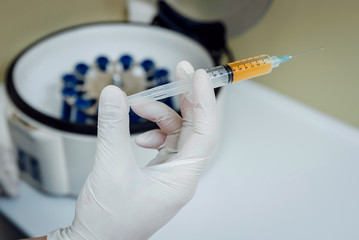
DrJB: Sure. There doesn’t have to be any downtime. After you do the injections, if you have any left over, we’ll apply a topping on the scalp. We want it to soak through the skin or in any of the injection sites. We don’t want to waste any of it, so we’ll use as much as we can on a person, give it 30 minutes to allow everything to soak in. Then you can just use a hand towel: there’ll be a little bit of blood at the injection sites, we can clean that up. And you’re good to go for almost anything that you’d be doing after that. I agree, pain’s not a big issue afterwards. You may be a little bit achy, have maybe a little bit of a bruised feeling. The numbing lasts longer when you do the ring block. You have about two hours of having that numb feeling on the scalp, which is weird, not uncomfortable.
DrMR: And the blood’s fairly rare. Would you say it’s fairly infrequent that people bleed?
DrJB: Other than just little needle marks. There are no significant vessels up there. From a side effect perspective, which we haven’t talked about, it’s really nice because we’re using your own body. So we don’t have to worry about allergic reactions. I think the needle is what causes any complications. A needle can cause a bruise, it can introduce infection. But those are all needle issues and nothing to do with the PRP. From a safety perspective, with just needles, you’re taking very little risk with this at all.
PRP Versus Laser Therapy for Hair Loss
DrMR: I think that’s well said. So I want to make sure that I’m tracking with your consensus on this. I’m comparing this to what I’ve read from some of the laser hair devices. By the way, I should mention for our audience that we’re going to do a review of some of these laser hair devices for hair loss. One thing you see in the literature for some of these devices is that you may see increased hair loss the first two months. You’re stimulating these follicles and weaker hairs are falling out. And you’ll see a replacement of that hair with, or new hair in, that hair follicle. Then by three to four months you’ll see less loss.
Then hopefully by five to six months, you’ll actually start seeing some improvement in how your hair looks and feels. So I’m wondering, if you’re doing the once a month for three to four months and you’re not seeing any results, do you think it’s advisable after that to go to once every three months? Or do you think it’s better to maintain that once a month until you see some results and then decrease your frequency?
DrJB: I think you want to be confident you’re getting results. So to get the best results, I think you want to give it a fair trial of that once a month. And I’d rather do more rather than less before we went to a maintenance pattern. Once you’re confident you’ve got it growing, you can then back off to every three to four months.
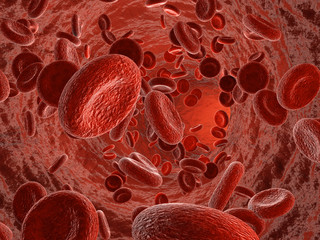
The real issue is the blood supply and the signaling to increase the blood flow. And I think if you start understanding the healing cascade anywhere on the body, you get what’s going on here. When someone breaks a bone, doctors say it’ll take eight to twelve weeks for it to heal. We know that’s how long it takes. We know that even a cut on the skin stays pink afterwards for three, six, nine months after the scab falls off. There’s increased blood supply to that area and that is what’s helping it heal. So you want to get that blood flow, get the process cooking. Once it’s cooking, we know that the healing cascade is going to continue on for some time after the stimulation.
So in the event of healing like a cut, the stimulation would be the injury. In the case of this, the stimulation is the addition of the PRP. It maintains pretty well. But you want to get comfortably across that line of making the difference. It’s the same with lasers with skin. We’re using the body’s natural healing response to enhance the thickness and quality of the skin. You want healing and we can take advantage of what the body knows how to do.
PRP for Hair Loss in Women Versus Men

DrMR: And would you say this works equivalently well in your experience? Also, do you know if there’s a consensus in the research literature for men compared to women?
DrJB: Well, both are getting in the same range of improvements, so we like that. With ladies, the rate of hair loss tends to be a little slower as you go through menopause, the estrogen’s slowly winding down, and the testosterone becomes a little bit more relevant, so to speak. I think that process or regression of the follicles is a little bit slower process. You still have a potentially healthy follicle that’s going to respond better to it.
Theoretically, I think—just because it’s a less regressed follicle base—that the women are generally going to respond better. But you’re going to struggle harder to get good results with the lady that is 25-30 years post-menopausal versus the lady who’s recently gone through menopause or is even perimenopausal. Getting together sooner makes more sense.
Synergists and Supplements for Hair Loss
DrMR: Right. And what about synergists? I read one study (I believe it was a pilot study) using minoxidil, also known as Rogaine, along with PRP. They showed that it was better than Rogaine alone, which would make sense. People might be wanting to use saw palmetto or some sort of oral DHT inhibitors. Are you finding synergists are pairing nicely?

DrJB: Yes, and back to hair loss, we don’t have the silver bullet where we can just dial it in and turn the hair back on. So I think it is going to be the combination treatments that give us the best results at this point. I think there’s some evidence to show that red light stimulation makes a little difference. I think with minoxidil, they show a 15-20% improvement in the thickness of the hair. That’s important. So I think the combination of those things used together, while inhibiting testosterone, will all help the results.
So we recommend a multi-modality approach to get the best answer there is. People can even combine it with hair transplants. And we know with hair transplants that the hair keeps regressing. Oftentimes, five, seven, or ten years later you need to do a little bit more in the hair for the transplant. Use your PRP to maintain the good hair that you have so that second layer of transplant is never necessary. I think combining methods makes a ton of sense to get the best results possible.
DrMR: And do you like any of these synergists more than others? I know there’s decent evidence for Propecia or Finasteride in an oral DHT inhibitor, but I think a lot of men have also heard about the potential sexual side effects of that. So that’s making people much more gun-shy around it. So perhaps saw palmetto, a topical minoxidil, some of these lasers… are you using these? And do you have a sense of which of these are the best?
DrJB: So at DermaCare here, we like to use the minoxidil. That’s my go-to. I think that combination is clean and easy and people can stay consistent with that. We talk about the other choices and give them places where they can find the red lights and the other options that are available. So I leave that to them. But for us we’re sticking with the PRP, and the minoxidil: that’s our regimen that we are recommending at this point.

DrMR: Gotcha. Any nutritional supplements that you find helpful? Like collagen or certain vitamin cocktails?
DrJB: Again, that tends not to be my area of expertise so I am recommending a good general diet. Lots of fruits and vegetables. A multi-vitamin is never a wrong answer, just to make sure that your complement of micronutrients is up to where it needs to be. That’s how I handle that.
PRP Skin Treatment
DrMR: Okay. And you’re also using this for skin. I don’t want to go too deep into this, but do you have a big picture or thoughts regarding how this is used for skin health?
DrJB: So, with skin health, the PRP is going to supercharge any treatment that you do that helps stimulate collagens. To get your skin thicker, smoother, and tighter and to get rid of some of the wrinkles, you want to stimulate the body’s ability to produce collagen. It’s a losing battle after the age of 30, so we want to do everything we can to enhance that. So if we do a laser and stimulate a collagen responsive, I can add PRP to that. I’m going to supercharge it and speed it up by giving more growth factors that the laser stimulates, signaling to heal. So I think your PRP is going to help almost any treatment that you do, including fillers. We know there’s a growth response and a healing response from the injections of fillers. When you add PRP to that, I think you make a nice difference. If you add PRP to fat transfers, it’s going to help with that too.
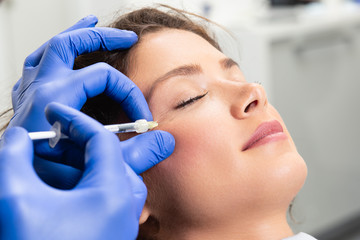
So adding PRP is a nice addition to anything else that someone is doing. I’m not a big fan of just PRP-ing the skin by itself. We most commonly would do it by micro-needling, putting those little holes in the skin and then adding the PRP, which will penetrate deep. We also do little micro-injections with the PRP to help with that. So at DermaCare that’s been our answer: we add PRP to other modalities that help with the skin, to add another level of benefit and get the best results possible for our patients.
View Dr. Ruscio’s Additional Resources
PRP Injection Cost
DrMR: Regarding cost, is it roughly $500 that most clinics are charging per PRP treatment for the scalp and hair?
DrJB: Yeah, that would be the price range for PRP that we find here in San Diego. And it’s a range, but that would be a good number to ballpark it.
DrMR: I’m just trying to give people a gauge. So if they go somewhere and they’re asking for $900 a treatment, they may want to get a second opinion.
DrJB: Yeah, ask around. I think there are lots of good people that are going to do it in the $500 range. It could go the other way. If they’re charging only $200, you’ve got to wonder what else is going on. So consumers beware and ask questions in both directions.
DrMR: Good question there. Is there a way you could dilute the solution and make it cheaper? Not that that would be advisable, but might that be something that someone’s doing who’s really cheap? The cost of materials for injection is close to $100 to $200, isn’t it?
DrJB: Yeah, exactly. You’re looking at $150-$200 to get the syringes and all the other materials that go with it. But they really can’t do anything with it. We go the other direction. When we spin it down and we have our serous fluid, we’ll sometimes just remove the top third because there are really no platelets in there. That’s all carrier, which isn’t making much of a difference. So we will get rid of that to increase the concentration.
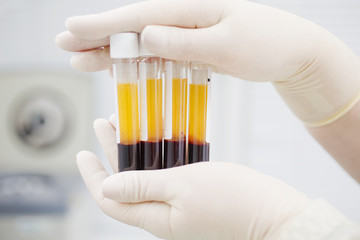
There’s some thought that there’s an ideal concentration of the platelets to response, where if you get too concentrated fluid it doesn’t work as well. If you have too dilute a fluid it doesn’t either. So there’s a sweet spot of magic concentration. There’s just too much variability, when I’m looking at the studies, to say that we have the answer to that question. So I don’t spend a lot of time playing with that. Plus there’s no practical way that the average provider has the materials in their office to do that. So we tend to get rid of the top third and then use the platelets in the bottom two-thirds of it to inject in the scalp.
DrMR: Now would you say that’s a standard practice, where most of the PRP-supplying companies are recommending practitioners do that? Is that something that’s done pretty much across the board?
DrJB: Yeah, I would say that would be the most common way of doing it.
Diluting it doesn’t help anybody either. You only have so many platelets and so much material that’s going to work with it. It doesn’t really matter if it’s in the full syringe or half syringe, as long as you’ve got the platelet fraction. You’re getting it into the skin where it’s going to start signaling. So that’s why I’m thinking there’s no disadvantage to diluting it more.
DrMR: Once you open up a kit, you pay the full expense. So you’re saying diluting it doesn’t do anything to reduce your cost. If someone was trying to be a shyster and charge you less, then there’s not really a way to do that, right?
DrJB: Right, exactly. There’s just no advantage, no secondary gain from doing that. So you don’t need to worry about it.
Episode Wrap-Up
DrMR: That’s good to know. Is there anything else as we finish that you want to leave people with? And would you please let people know your website or where you would like people to track you down on the internet?
DrJB: Sure, thank you. The bottom line is, I think PRP is one of the best tools that’s available right now, with our current technology for promoting hair growth. There really is nothing that compares to it chemically, in terms of medications that we have to offer. It’s certainly a lot less invasive than hair transplant and a lot less expensive. So I think right now it’s really the best thing that we have to offer. And for people that are concerned I think it’s still something you need to consider. Get to know your provider and give it a fair trial, would be my one caution. Don’t do it once and pass judgment on it. Give it a fair trial to make a difference for you. So that would be my final word.
Stay tuned as we get better at it and new technologies come on board. As far as contact: DermacareSanDiego.com is our website. It has our contact information and all the things that you would like to learn about us. Either send us an email through DermacareSanDiego.com or contact our office. I’d be more than happy to talk to anybody that has questions.
DrMR: Awesome. Well, Jeff, let me thank you on behalf of my audience and also myself. I appreciate you sharing your experience here because I think this is an exciting therapy. And speaking with the clinician who has been doing this day-to-day has been really helpful to give us some realistic expectations, in terms of trying to apply this therapy, get the most out of it, and hopefully keep as much hair as you can!
DrJB: That’s right. I appreciate the opportunity and I hope was helpful to your audience.
DrMR: Awesome, thanks again.
DrJB: Thank you.
Dr. Michael Ruscio is a DC, natural health provider, researcher, and clinician. He serves as an Adjunct Professor at the University of Bridgeport and has published numerous papers in scientific journals as well as the book Healthy Gut, Healthy You. He also founded the Ruscio Institute of Functional Health, where he helps patients with a wide range of GI conditions and serves as the Head of Research.





Discussion
I care about answering your questions and sharing my knowledge with you. Leave a comment or connect with me on social media asking any health question you may have and I just might incorporate it into our next listener questions podcast episode just for you!